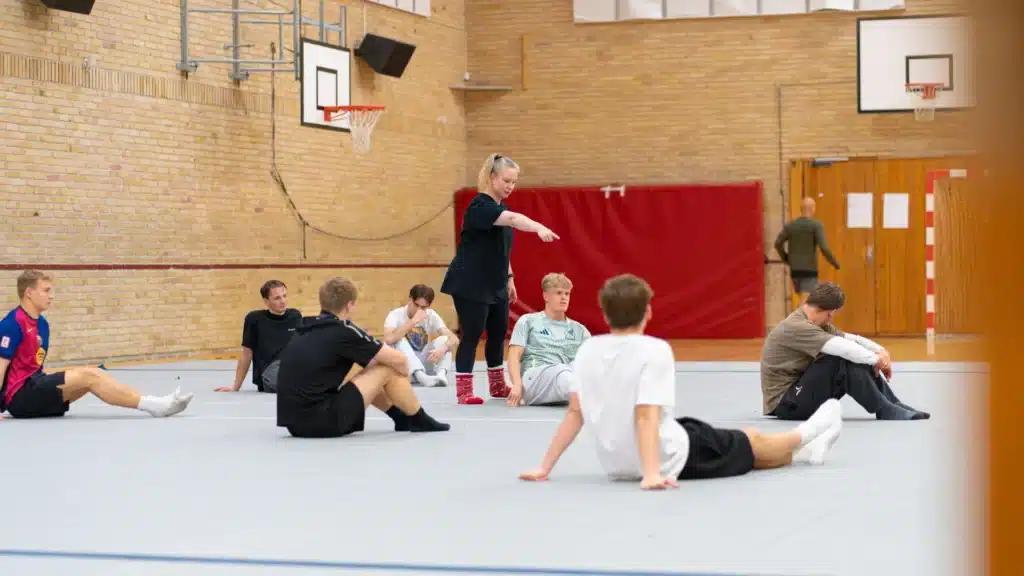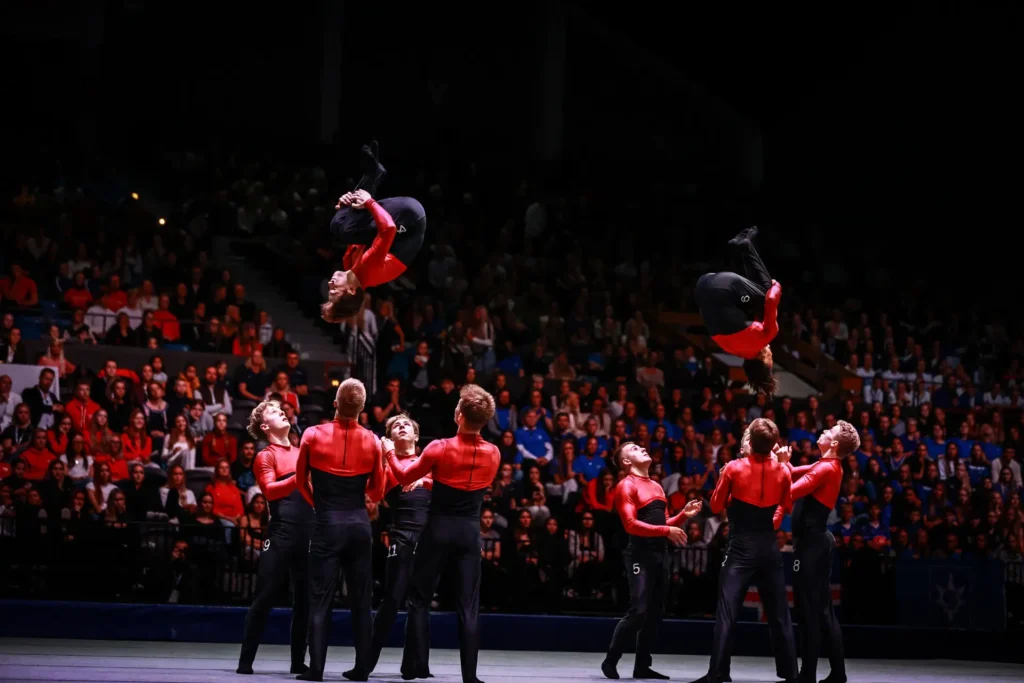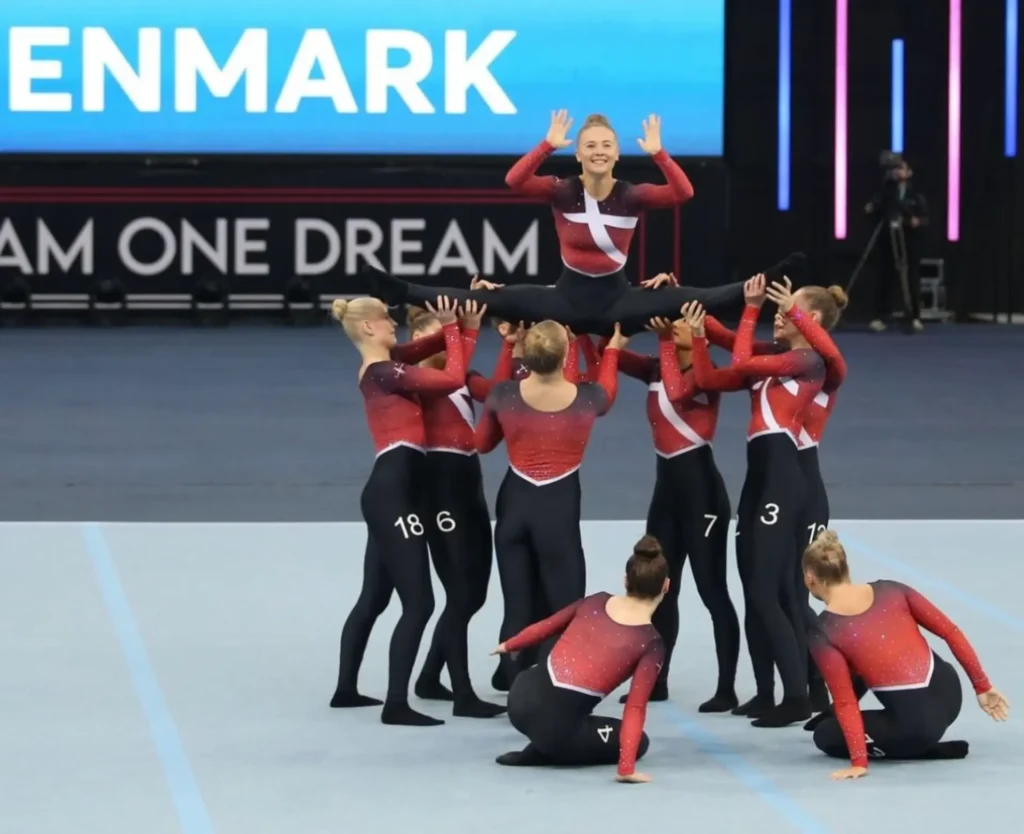I love extra practices because they finally give us time to dive deeper into the movements and expression in the routine than we usually can during a regular floor training session. There’s also more time to give a gymnast a new place in the routine if needed. In a perfect world, I plan the dates for extra practices with my senior gymnasts right at the beginning of the season. Sometimes it slips through the cracks, and I schedule them along the way. I always do this in collaboration with the gymnasts. There are a lot of things to consider when choosing a date, and their schedules are already busy, so I always consult with them. I usually set aside 2–4 hours per team, depending on whether it’s before the first competition or just before Nationals. Right before Nationals, there shouldn’t be much left to adjust in the routine—so hopefully, 2 hours is enough.
I use a whiteboard where I write down 10–15 points we need to correct or focus on. The number of points varies depending on the time in the season. It’s very satisfying to cross off each point as we work through them. It’s incredibly motivating for the gymnasts (and for me), because we can see exactly how much progress we’re making during the session.
There’s a difference between senior teams and younger ones. I don’t automatically plan extra rhythmic practices for 10 year olds or junior teams ahead of competitions—they have to ask for them themselves. If the team expresses a desire for an extra practice, I’ll happily arrange it, but the initiative has to come from them. I believe the motivation and drive should come from the gymnasts—not from me as a coach. They need to learn to take responsibility and initiative for their own improvement. I can definitely highlight the benefits of extra training and help motivate them to want to improve, but the drive must come from within. So even if just one gymnast asks about an extra session, I’ll take the opportunity, because it’s important to me that they know I take their goals and ambitions seriously.
I also have time to talk to the gymnasts more than at a normal training session. Because at a normal training session, the focus is on the gymnastics and the schedule because there is (maybe) more than one team in the hall for the training. It’s a bit easier to be a jumping coach, where you have more time with the individual gymnast at each training session. You don’t really have that as a rhythm coach.
Every extra training session must have cake! At least if you ask me. There should be a little extra fun during the breaks and time to talk to each other. I don’t know why it is, but my gymnasts always play football as a warm-up and in the small breaks during an extra training session. How they can find a ball in the gym is a mystery to me. But it ALWAYS happens!!!
I also spend more time watching video of the routine together with the gymnasts during these practices. It might be during one of the breaks, where we focus on 2–3 key points in the routine: Are all gymnasts holding the circle shape? Is everyone standing correctly in the main formation? Is the transition into the final formation symmetrical? After watching the video, it’s quick and easy to fix the parts that didn’t work, because we’ve seen it together.
Video feedback is such a powerful tool, and I use it as often as I can. It can be done in many ways. I might prepare individual feedback for each gymnast before the extra session, which they then work on during training. Or the gymnasts might film each other in pairs and correct the focus points I’ve given for the movements. A recurring theme is always to ensure the upper body is used enough throughout the entire routine—so that’s always one of my key points. I also use the opportunity to pair gymnasts together based on movement style or specific elements depending on what I think is most important to improve.
An extra practice doesn’t have to be all about gymnastics. It could be a weekend training where part of the time is used for rhythmic work, part for social activities, and part for tumbling or strength with a different focus—maybe even a trip to the swimming pool. It’s a great way to combine gymnastics and team bonding. We often plan these kinds of sessions at the start of the season so the gymnasts and coaches get to know each other better. The social side of a gymnastics team is incredibly important, and that’s why I always prioritize it. We need to sweat together, and we need to have fun together—and extra practices really help open that up.
How do you use extra practices?


